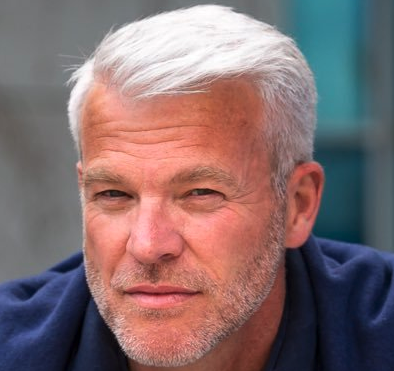The Dominican Republic has ambitious plans for its already-thriving tourism industry.
|
Sponsored guide 
|
The Dominican Republic’s government is balancing its drive to diversify its economy with a strong focus on developing the island nation’s traditional strength – tourism. Tourism generates over $6.5 billion annually and is growing at 7% a year. With occupancy rates at over 80%, the Dominican Republic is experiencing a boom in new hotel development and refurbishment of its existing hotel stock. There are currently 70,000 hotel rooms in the country and the projected pipeline will bring a further 8,000 on stream over the next few years.
For a nation of 10 million people, the country boasts very strong international links. There are six international airports (more than Spain) and soon the privately-held airport of Punta Cana will be classified as a US Federal airport, removing the need for travellers travelling from the US to clear immigration. There are also extensive port projects to integrate the country more closely into the Caribbean cruise industry, with Santo Domingo and Puerto Plata bringing hundreds of thousands of tourists onto the island from cruise ships every year.
Internal infrastructure has also improved the Dominican Republic’s appeal to tourists. New highways and a bypass of Santo Domingo have more than halved travel times around the island, making daytrips to the capital from coastal resorts more popular and generating additional revenue. Tourism currently makes up 12.7% of GDP and this is set to increase with the government planning an ambitious expansion programme. Euromoney asked the minister of tourism, Francisco Javier Garcia, to outline the government’s plans to develop tourism through to 2020.
EM: How reliant is the Dominican Republic on tourism and how do you plan to enhance the industry under the next administration?
Garcia: Under president Medina’s current administration there has been a considerable increase in the number of tourists visiting the DR. Between September 2012 and September 2015 we welcomed 6,650,000 tourists – generating $17 billion. Each year we create a new record for the number of tourists we welcome to our shores. We are not only the country that is growing the most in relative terms but we are growing the most in nominal terms. The government’s investment is crucial to this growth – we are ranked 11 out of 135 for developing infrastructure that supports the tourism industry.
EM: How have investors responded?
Garcia: The change in the conversation with the CEOs of the world’s large tour operators has been dramatic. At the start of this administration, these meetings had a mixed agenda – some good things and some complaints – but now that has changed. We are not even being asked for many high-level meetings anymore, and when we ask why this is, the response is that these CEOs have nothing left to ask for. Everything the president pledged to the industry during the 2012 election has been delivered. However, I would like to stress that the appeal of the DR goes beyond financial incentives and the potential for development of our coasts. Our people are also a leading competitive advantage. For seven consecutive years we conducted a survey of tourists who come to the Dominican Republic. Every year the highest-ranking positive factor about tourists’ stay in the country has been the attitude and quality of service provided by the Dominican people. It’s what keeps bringing tourists back: in 2012 we set a target of attracting 10 million tourists before 2022 and we will hit that goal before 2020 with our current rate of growth.
EM: How important is infrastructure development to underpin this rate of growth?
Garcia: Infrastructure investment has driven a lot of the growth in investment in tourism, but so too have the investment incentives law. We amended the incentives law 158-01 to broaden the activities that qualify for tax and other incentives. Now it isn’t just destinations that are covered by the law but any activity related to tourism. And we also extended those benefits from 10 to 15 years. This has injected a lot of dynamism into areas that previously had no tourism investment.During this administration we have approved 108 projects, which correspond to 17,500 new hotel rooms – as well as other tourist-related projects. However, in terms of hotel rooms, so far 4,500 new rooms have been inaugurated and there are currently 11 hotel projects in the execution phase, which will lead to another 4,400 new hotel rooms.
EM: How do these projects differ from existing ones?
Garcia: We have approved some projects that mark an important difference, from a social and economic perspective, for the DR. For example, we are about to conduct the official launch of a significant development in the region of Pedernales. There are two projects – both backed by world-class businesses – that, combined, are worth more than $3 billion. And these will be destinations unlike any others in the Dominican Republic. They will be low-density resorts and, with more than 55% of the land in the area protected, they will attract an eco-conscious tourist. These resorts will be very superior quality: we say that pessimists say that the beaches in Pedernales are the most beautiful in the country, while the optimist says they are the most beautiful in all of the Caribbean. However, despite the natural beauty the area also has pockets of relatively high levels of poverty and these projects are vital to help generate wealth in the local economy.

|
|
Cenrique Ramirez, CEO of |
EM: What are the other strands to the strategy?
Garcia: We have been pursuing a very ambitious plan to generate tourism in our capital, Santo Domingo, which is the oldest settlement in the new world. We are developing the port to enable cruise ships to visit the city and have been redeveloping the colonial town, as well as other neighbourhoods. The effect has been amazing. We have seen a lot of development of the leisure industry, including new hotels, bars and restaurants. The gastronomy of Santo Domingo is now so well developed that it need not be envious of any other world city. All this has been facilitated by an expansion of the tourist zone – which offers investment incentives – beyond the original scope of the colonial area, along the city’s coast, which has led to significant development. We now have some malls that rival Miami for size and for the choice of brands.
The cruise ships are a very important strand to our strategy. It is the form of tourism that has the highest spending per person. It’s a high-frequency, high-revenue business. And it’s not just crucial to Santo Domingo. Carnival has just opened its new $85 million terminal near Porto Plata. It estimates 300,000 tourists in its first full year of operation and 600,000 by the third year. And the company’s senior management has told me that the reaction from the first ships has been so overwhelmingly positive that they plan to expand quickly up to 1 million a year. That has led to other tour operators expressing an interest in developing logistics in the country and this will have a big impact on the economy.
EM: What about competition elsewhere in the Caribbean? Is the US’s rapprochement with Cuba a threat?
Garcia: No. We don’t compete with Cuba. We already have many more tourists and operate in a different segment. But we are going to work with Cuba. I have already invited Cuba’s tourism minister, Manuel Marrero, to visit the Dominican Republic to see how we have developed and because we know how to offer the service that north Americans desire. We are also going to work on an agreement to offer Chinese visitors holidays that are split between Cuba and the DR, which will offer us an expansion into the Chinese market and could have an extraordinary impact on the flow of tourists to the country. We have already seen Chinese businesses buying hotels in the country to prepare for this growth in anticipation of such an agreement.
EM: Which markets are seeing the fastest growth for the Dominican Republic?
Garcia: One of the fastest-growing markets was Spain. We saw 16% more visitors in 2015 from that European market, compared with a total growth of 9%. The US is our largest market. That continues to grow and we saw 12% last year; it’s now equivalent to 48% of all our tourism. But we also saw continued demand from Canada – one of the most stable markets. And Europe is growing strongly, especially as other markets in the Middle East are having problems, and Germany saw one of the strongest increases in tourist numbers.
However, perhaps the biggest ‘breakthrough’ market in recent years has been in south America. We have seen a huge growth in tourists from Argentina, Brazil and Venezuela. Every time I meet someone from one of these three countries they tell me how fashionable it is to go to the Dominican Republic. So that’s one of the most exciting things about tourism in the DR right now: we have solid growth from our main market of north America, fast growth from Europe, potential from Asia and new, strong demand from south America. It’s this strong geographical diversification that provides the basis for domestic and international investments in our tourism industry and has enabled us to surpass our already ambitious targets.




